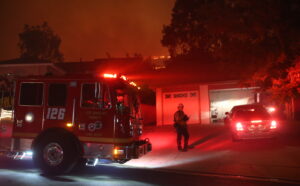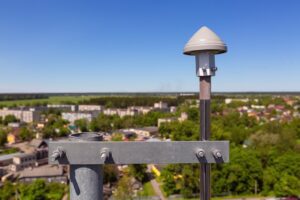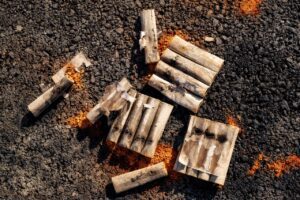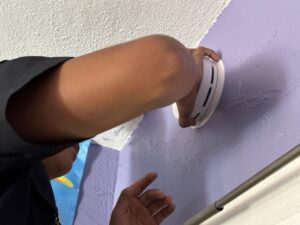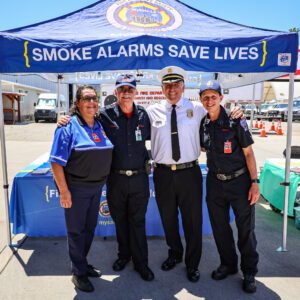UPDATED 8-3-15
As Californians, we all spend a lot of time worrying about earthquakes. We know a significant quake will rip one part of the state at some point, so we prepare via programs like the Great Shakeout. Major earthquakes strike the state every 10 to 20 years.
Wildfires rip through California every year. And when there’s a drought, as there is now, things can get extremely dicey. This year is a good example of a bad year. As of August 1, here’s what’s going on in California:
- 21 fires burning out of control across the state (primary cause: lightning strikes)
- 134,000 acres destroyed (with 1.3m acres threatened)
- 1 firefighter line of duty death
- 4 firefighters hospitalized
- 6 civilians hospitalized
- 52 structures damaged or destroyed (as of morning 2 August)
- 32 vehicles destroyed
- 6,500 homes threatened (as of morning 2 August)
- 5,156 homes evacuated (as of morning 2 August)
- 12,100 people evacuated (as of morning 2 August)
- 9,100 firefighters on the line (as for afternoon 2 August)
- Drought index: 97% for the State of California
- Governor Brown delcared a State of Emergency on July 31
(sources: Cal Fire, CalOES, LA Times, WHNT, KCAL, CNN)
134,000 acres equals approximately 209 square miles. Los Angeles is 471 square miles. That means that in the last week, an area nearly one half the size of Los Angeles has been destroyed. What kind of national news coverage would the destruction of Hollywood, Los Feliz, Pacific Palisades, and the Santa Monica Mountains generate? San Francisco is approximately 50 square miles in size. As such, the destruction of the past week would have destroyed an area 4X the size of the city by the bay.
This isn’t a fluke, either. As of July 1, more than 1,000 wildfires had occurred in California, a year over year increase of more than 35%, and more than double the number of fires recorded through the first half of 2005.
It’s expensive, too. California burned through its $209 million firefighting budget in just the first few months of this fiscal year. Governor Brown had to add an additional $70 million from a state emergency fund, and that money is gone. The state department of finance said the wildfire budget has since been increased to $423 million. On Friday, Governor Brown declared a state of emergency, saying, “California’s severe drought and extreme weather have turned much of the state into a tinderbox. Our courageous firefighters are on the front lines and we’ll do everything we can to help them.”
Scientists have been talking about wildfires in relation to global climate change as well. Longer periods of hot, dry weather, often leading to extended periods of drought mean wildfire fuels will be primed to burn. And when it rains, dead brush doesn’t come back to life — it’s still dead — and a willing partner for wildfire. The Obama administration’s National Climate Assessment cited wildfires as a significant risk (threat) posed to the country due to these changing weather conditions.
While there are natural conditions for wildfires to occur, notably from lightning strikes, the most common cause of wildfires in the State of California is man. That’s right — most of the destructive and life threatening fires in our state are caused by human beings. Here are a few examples (it’s too early to know the cause of each of the currently burning fires, although one arrest has been made, and lightning is a certain cause in some instances):
Rim Fire (2013)
Area burned: 257,314 acres in and around Yosemite National Park.
Damage: 112 structures burned.
Cause/Follow-up: An illegal campfire in the Stanislaus National Forest burned out of control. Bow hunter Keith Matthew Emerald, 32, faces two felony charges and two misdemeanors.
Morgan Fire (2013)
Area burned: 3,111 acres on Mount Diablo.
Damage: No structures burned.
Cause/Follow-up: A target shooter on private land caused sparks when he fired his rifle. The ignition was deemed accidental and the shooter was not charged.
Station Fire (2009)
Area burned: 160,557 north of Los Angeles.
Damage: 2 deaths, 209 structures.
Cause/Follow-up: Lit by arsonist. No arrests.
Lockheed Fire (2009)
Area burned: 7,817 acres near Bonny Doon (Santa Cruz County).
Damage: 13 structures.
Cause/Follow-up: Campfire burned out of control. No arrests.
Zaca Fire (2007)
Area burned: 240,207 acres in Santa Barbara County.
Damage: 1 structure.
Cause/Follow-up: Grinding equipment being used to repair a metal pipe caused sparks. Corporate owners of La Laguna Ranch, without admitting guilt, agreed to $17 million settlement to help offset firefighting costs.
Witch Creek Fire (2007)
Area burned: 197,990 acres in northern San Diego County.
Damage: 2 deaths, 1,650 structures.
Cause/Follow-up: Sparks from San Diego Gas & Electric power line.
Esperanza Fire (2006)
Area burned: 40,200 acres west of Palm Springs.
Damage: 5 deaths, 54 structures.
Cause/Follow-up: Lit by arsonist. Raymond Lee Oyler was convicted of setting this fire and others and sentenced to death in 2009.
Day Fire (2006)
Area burned: 162,702 acres in the Los Padres National Forest (Ventura County).
Damage: 11 structures.
Cause/Follow-up: Debris burn at campsite got out of control. Transient Steven Butcher was sentenced to 45 months in prison.
Bear Fire (2004)
Area burned: 10,484 acres near Redding.
Damage: 110 structures.
Cause/Follow-up: A lawn mower sparked dry grass. William Matthew Rupp was accused of ignoring warnings not to mow during hot weather and sentenced to four years in prison. On the day of the fire, he told neighbors to “go to hell” when they told him to stop mowing his lawn.
Cedar Fire (2003)
Area burned: 273,246 acres east of San Diego.
Damage: 15 deaths, 2,820 structures.
Cause/Follow-up: Fire lit by lost deer hunter. Sergio Martinez pleaded guilty and served six months in a halfway house.
As Californians, what can we do to mitigate this increasing and dangerous threat?
There are multiple factors involved, but they fall roughly into several categories:
- fire prevention activities
- firefighting activities
- community prevention and readiness
Firefighters across the state (and in all 10 western states) are doing all they can to prepare. In Los Angeles, Fire Chief Ralph Terrazas ordered the annual contract for the Erickson “Helitanker” to be initiated beginning August 3, 2015 – the large copter is capable of dropping 2,600 gallons of water in a single drop. Super Scooper aircraft are also joining the Department’s fleet of six firefighting helicopters. Similar actions are being taken by Los Angeles County, Cal Fire and other agencies. LA County operates a type 3 wildfire handcrew (a type 3 crew fights fire) and LA City operates a type 2 handcrew (type 2 crews cut fireline and support other firefighters). Throughout the state, fire agencies are tracking, evaluating, and looking for ways to more effectively fire wildfire.

There are two key things that residents can do to support this wildfire threat – and MySafe:LA is working to create a strong message for all residents that may help reduce some of the threat to life and property.
First of all, follow the fire code. Move combustible materials (brush clearance) away from your home. Not only will you reduce the threat to your home, but to that of your neighbor, and of your community.
Second, practice Ready, Set, Go. Don’t just agree that it’s a good idea. Practice it. Every month from August to February.
The idea behind Ready, Set, Go is simple:
Be ready in the event of a fire approaching your home. Prepare your property. Make a plan.
Get set to evacuate if conditions deteriorate.
Go when told to do so.

Everyone values their property. We hate the idea that anything bad might happen to the place we call home. But no property is worth risking your life, or the lives of firefighters. You may be tempted to stay, believing you can help protect your property. Historically, a number of people have taken that decision, but when the fire rages over the crest of the hill by their homes, they change their minds. 100-plus flame lengths tend to impress people to leave — now. Unfortunately, it’s often too late to get out by then, and attempting to do so often interferes with firefighting operations. Remember, if you’re trapped, firefighter must make you their priority, putting their lives at risk. So, don’t wait. Go.
MySafe:LA will be increasing our awareness campagin for wildfire prevention and survival during the coming few months. Know that conditions are ripe for devastating fires throughout the State of California — not just in Napa Valley, but everywhere, from San Diego to Cresent City. It’s a serious business, and it’s in our combined vested interest to make preparation and prevention a priority.
The threat from earthquakes is just as significant as it has been for many years. The big one is coming. Preparation is something every Californian should be actively involved with. Wildfires are here – now. And this week, they’re creating roughly the same swath of destruction as a strong earthquake. And that’s serious business.



